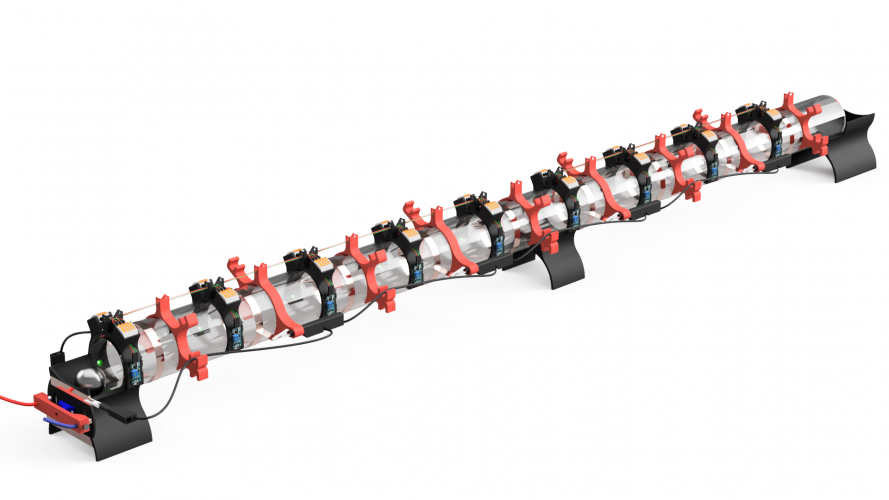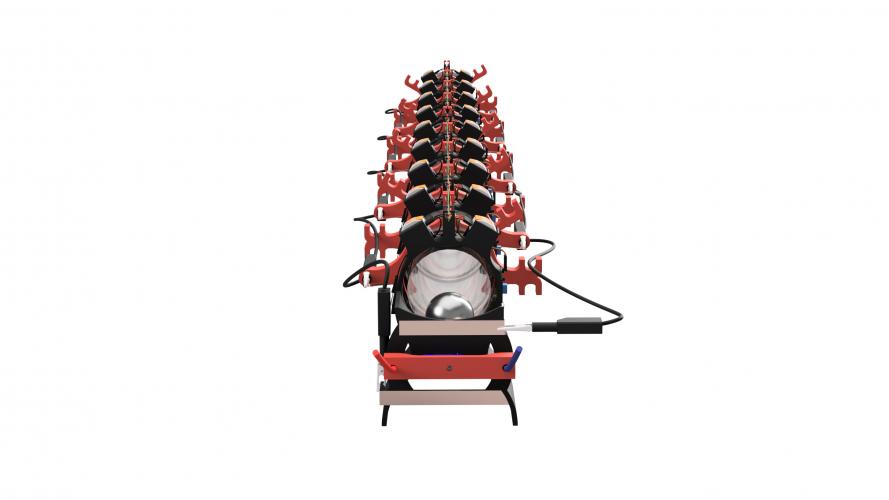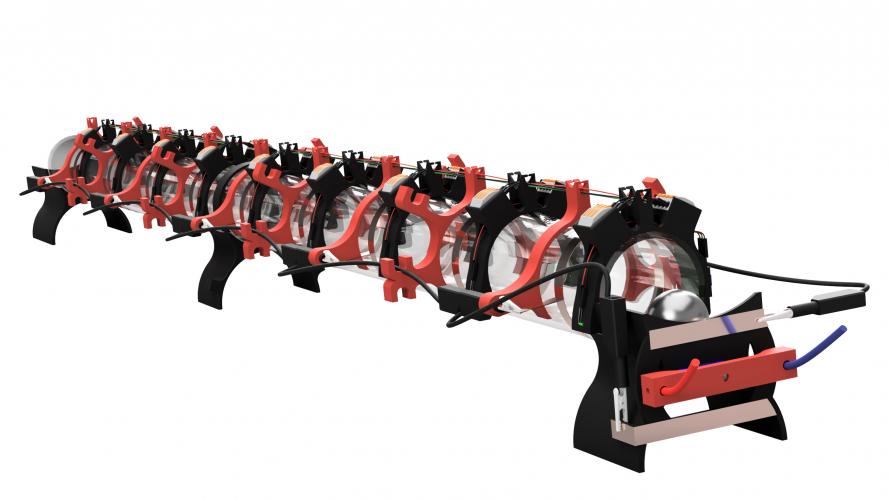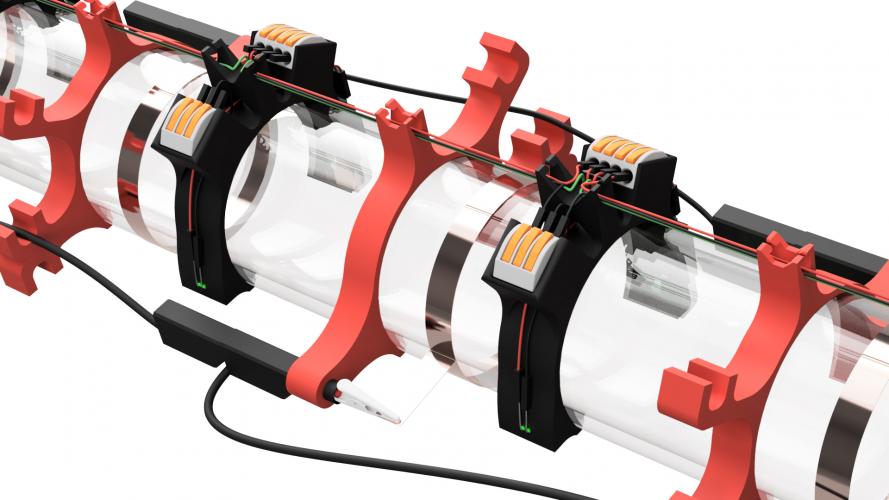LINAC 3D
3D printed LINAC
Linear particle accelerators (LINACs) are fundamental to modern particle physics. At CERN, linear accelerators are at the very core of the accelerator chain and serve as the main source for ion beams (LINAC 3) and proton beams (LINAC 4), respectively.
Despite their importance for experimental particle physics, very few teaching aids have been available to demonstrate the underlying principles in a hands-on fashion to high school students. This is why we have developed the 3D printed LINAC.
Scope of the project
At its core, the 3D printed LINAC is a fully functional model to demonstrate how charged particles can be accelerated in oscillating electric fields. In the model, a graphite coated ping pong ball is accelerated through a plexiglass tube using a custom-built switch.
Minimal equipment is needed: A 3D-printer for the main parts, an Arduino for controlling the accelerator, some standard electronic components, and a plexiglass tube. A list of the required materials is provided, along with the construction manual.
What you can build
- LINAC model I: A simple Arduino-controlled linear accelerator with pushbutton control.
- LINAC model II: A more sophisticated Arduino-controlled linear accelerator that uses light barriers to automatically detect the position of the ping-pong ball and invert the electric field accordingly.
Getting started
- Download the manual and the required .stl files from zenodo
- Download the provided Arduino sketch from zenodo
- Choose which experiment you would like to build.
- 3D print the parts you’ll need according to the specifications in the manual.
- Order the plexiglass tube and necessary electric components from your favourite supplier.
- Assemble the linear accelerator and get rolling!



